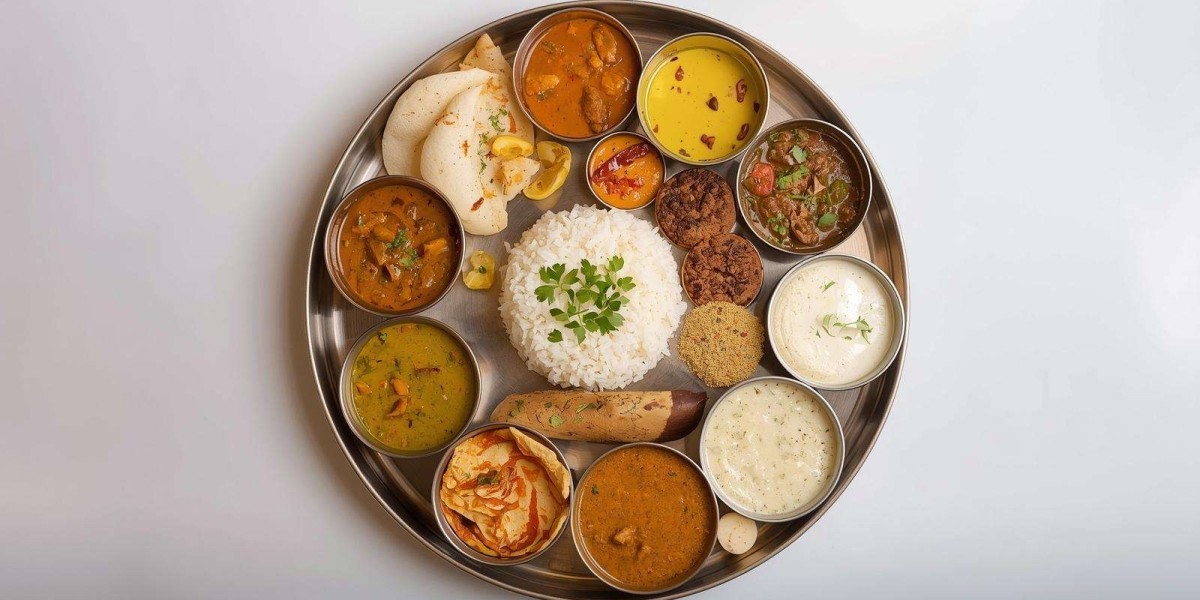FSSAI Consider Indian Thali as a Healthy Food
Balanced Nutrition: It includes carbs, proteins, fats, fibre, and micronutrients in one meal.
Portion Control: Smaller servings prevent overeating.
Seasonal Ingredients: Fresh vegetables and spices maximise nutrient content.
Digestive Aids: Accompaniments like raita and chutneys enhance digestion.
Main Ingredients of Indian Thali: Types and Benefits
1. Dals (Lentils)
Lentils are a staple in every Thali, providing plant-based protein and fibre. Here are the common types:
- Toor Dal (अरहर दाल): Rich in protein, dietary fibre, and folic acid, toor dal supports muscle repair and boosts digestion.
- Moong Dal (मूंग दाल): Known for being light and easy to digest, moong dal is packed with antioxidants and helps with weight management.
- Masoor Dal (मसूर दाल): A good source of iron and proteins, masoor dal helps combat anaemia and supports overall energy levels.
- Chana Dal (चना दाल): High in protein and complex carbs, chana dal aids in stabilising blood sugar levels and improving gut health.
2. Sabzis (Vegetable Dishes)
Vegetables in a Thali not only add vibrant colours but also provide essential nutrients. Some examples include:
- Bhindi Masala (भिंडी मसाला): Okra is rich in vitamins A and C, promoting skin health and immunity.
- Aloo Gobi (आलू गोभी): A combination of potatoes and cauliflower, this dish provides energy, fibre, and antioxidants.
- Palak Paneer (पालक पनीर): Spinach and paneer (Indian cottage cheese) are high in iron and calcium, making this dish excellent for bone health.
- Baingan Bharta (बैंगन का भरता): Eggplant is low in calories and high in fibre, supporting heart health and digestion.
3. Rice Varieties
Rice forms the carbohydrate base of most Indian Thalis. Common options include:
- Steamed Rice (सादा चावल): A staple, it provides quick energy and pairs well with dals and curries.
- Jeera Rice (जीरा चावल): Flavoured with cumin seeds, this variety aids in digestion and adds a subtle aroma.
- Brown Rice (ब्राउन राइस): A healthier alternative, it is rich in fibre and promotes better heart health.
- Khichdi (खिचड़ी): A mix of rice and lentils, khichdi is light, nutritious, and excellent for digestion.
4. Accompaniments
No Thali is complete without its flavourful accompaniments:
- Pickles (अचार): Made from mango, lime, or chillies, pickles add a tangy punch and stimulate appetite.
- Chutneys (चटनी): Mint, coriander, or tamarind chutneys are not only delicious but also packed with antioxidants.
- Raita (रायता): Yogurt mixed with cucumber or boondi helps cool the palate and promotes gut health.
- Papad (पापड़): Made from lentil flour, papad adds a crunchy texture and is a source of protein.
5. Desserts
Indian desserts are a delightful way to end a meal:
- Gulab Jamun (गुलाब जामुन): These milk-based sweets are rich in energy and perfect for special occasions.
- Kheer (खीर): Made with milk, rice, and nuts, kheer provides calcium, protein, and good fats.
- Halwa (हलवा): Varieties like gajar (carrot) or suji (semolina) halwa are high in beta-carotene or fibre, respectively.
Right way to place food in Typical Thali
According to Hindu culinary traditions, food should always be served only after the diner is seated comfortably.
Once the thali is placed, begin by serving staples like rice, roti, or other flatbreads right in the centre of the plate. Following that, place dry items such as fries, fruits, or sabzi (dry vegetable dishes) on the lower right portion. On the upper right, arrange the curries and gravies. Interestingly, desserts with rasa (liquid consistency) are also traditionally placed on the right side.






